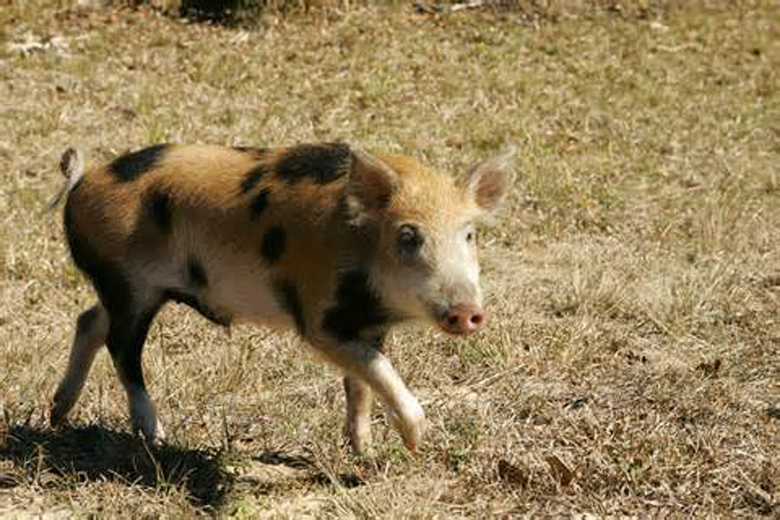NOTES FROM HOG HEAVEN
When I moved to Missouri 15 years ago, I was given to understand that the state had a “shoot on sight” law for feral hogs. The critters were moving north from Arkansas and had become a major agricultural pest requiring extreme measures. “Shoot on sight” meant you could carry a rifle in your car and if you saw a hog rooting up a pasture, you could pull over, poke the rifle out the window, whack him and drive on.
In a state as well-armed and hunting-oriented as Missouri, you’d think the outlaw swine would be doomed in short order, but such was not the case. Naturally, I carried a suitable firearm wherever I went, but never in all these years have I seen a hog in a field in daylight. Whitetails, certainly, by the dozen, and turkeys by the score. But hogs? Never. They’re just too canny to show themselves that way, preferring to snooze by day and root by night.

The Missouri conservation department sends out regular missives to holders of hunting licenses, alerting us to everything from migrating turtles to the dangers of chronic wasting disease. A couple of years ago, in a remarkable about-face, the department requested that non-government people (that is, us regular hunters) NOT hunt feral hogs — the reason being that hunting, on foot or with dogs, pursuing pigs through the woods, was actually contributing to their increase, rather than the reverse.
They explained that government trappers, attempting to reduce hog numbers, tried to capture entire groups, and that hunters were scattering those they didn’t kill, allowing them to interbreed and establish new clans of piggies.
At the time, no one seemed to notice the serious irony here, and the strong argument this presented. Hunting increases prey numbers? Remarkable! Of course, hunters and groups like SCI, as well as the more enlightened conservation departments, are well aware of this. But since then, I have seen campaigns by various animal-rights and anti-hunting groups that insist that just the opposite is true. If an animal’s numbers are declining, then hunters must be to blame. No one managed to put two and two together.
In the early 1990s, when ranch-style hunting was in its infancy in South Africa, I spent some time on a farm in the Orange Free State, whose terrain resembles the less hospitable bits of Wyoming. It was during a big drought, and farmers had learned that having populations of game animals was better economically than trying to maintain their traditional cattle and sheep.
The fledgling game ranchers were learning as they went along, but I was told of one instance in which a farmer had transplanted about 30 springbok and was puzzled when, after a few seasons, their numbers had not increased. He couldn’t understand it: He protected them like his own children and predators were nil, yet they were not thriving.

Someone suggested he shoot a few, and after the objections died away, he did just that. Not many, you understand. One here, another in a month, a couple the month after that. ‘Lo and behold, things began to change. The herd grew wary, the rams started acting more ram-like, and ewes began producing twins. Soon the herd had doubled, and he was making money guiding hunters from the big city and charging trophy fees.
This story was related to me by an official of the Free State game department, recounting the difficulties he was having persuading other farmers to do the same. The universal reaction seemed to be, “Well, that can’t be true!” But, true it is.
I don’t know how far the Missouri game department got with its efforts. There are still feral hogs ravaging the Outlaw State and I doubt that many farmers, spotting hogs in the cornfield at night, would refrain from pulling the trigger. Farmers I know in the Mississippi Delta tried everything, from traps to bounty hunters, but only the latter had much effect, and it’s a continuing battle. I suspect feral hogs are with us to stay, which may or may not be that bad, depending whether you like pork.–Terry Wieland

